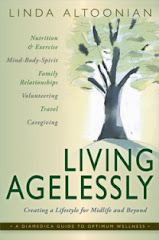Preparing our tax returns is often confusing and sometimes anxiety provoking. The constant changes in law and the complicated forms make doing the preparation ourselves more and more difficult, but deciding to have someone else do them is also a problem.
We don't always know that the people doing our taxes are competent, and that we are only paying what we should. To that problem, we add the variety of charges possible for these services. They can range from $50 to $400 for a fairly basic return.
If you use a service, be sure to check the Better Business Bureau first to see if others have lodged complaints. Ask for references and never be afraid to ask questions or to negotiate a better charge. Most companies are receptive to negotiation because they want your business. The worst thing that can happen is that they say no.
If you have a moderate or low income, consider AARP's free tax service. Yes, free! In fact, AARP is the nation's largest free service. The organization's volunteers offer their skills and expertise, meet locally with taxpayers who need to bring their records to the appointments, and submit electronically. AARP Tax-Aide locations are open from late January/early February through April 15. Visit aarp.com to find AARP Tax-Aide sites.
AARP pays special attention to those who are 60 and over. In addition to help with taxes, AARP offers estate and retirement planning services.
April 15 is just around the corner, but it's not too late to take advantage of this valuable service. Go to your appointment as prepared as possible. Organize your receipts. List possible deductions: medical, prescription, work/business expenses, child care, dues, property costs, interest/dividend payments, and charitable donations are some general categories. Staple your receipts to your list and store them with a copy of your return in a dated file folder. If the IRS comes knocking, you're prepared.
Of course, I hope you never experience an audit, and I wish you a really huge refund!
Saturday, March 27, 2010
Saturday, March 13, 2010
Grandparenting Via the Web
My daughter and her family are overseas now. They have called twice via webcam. What incredible technology. It is such a blessing to be able to see them all. I wish that all who have loved ones who live, work or serve America far away would have access to computers with cameras.
If you don't own a computer, you might consider buying a HP Notebook. It is a small laptop with a built-in microphone and camera, so visually communicating with anyone throughout the world is really easy. The notebook computers range from $200 to $300 and can do just about anything a larger computer can do, but it is much more portable. I just love being able to slip it into my small purse, work on my word documents where ever I want, and get onto the internet anywhere.
It is especially wonderful to see my grandchild over the webcam. She is eight months old, adorable and already brilliant (I'm not at all prejudiced.). She is also changing before my eyes, and I don't want her to forget her Grandma, so I want to use my time with her especially well.
I think I'm going to start reading to her. She can see the pictures in the book, so that should keep her attention, and I hope the process will reinforce remembering my voice. From the time she was born, I sang to her. Though my voice is certainly not what it once was, miraculously, it used soothe her and put her to sleep. I think I will also sing those songs to her. Anything at all to keep reinforcing her memory of me.
I think that if Lily and I can connect actively and on a regular basis, the less I will feel the sadness about they're being so far away. Got any other ideas?
If you don't own a computer, you might consider buying a HP Notebook. It is a small laptop with a built-in microphone and camera, so visually communicating with anyone throughout the world is really easy. The notebook computers range from $200 to $300 and can do just about anything a larger computer can do, but it is much more portable. I just love being able to slip it into my small purse, work on my word documents where ever I want, and get onto the internet anywhere.
It is especially wonderful to see my grandchild over the webcam. She is eight months old, adorable and already brilliant (I'm not at all prejudiced.). She is also changing before my eyes, and I don't want her to forget her Grandma, so I want to use my time with her especially well.
I think I'm going to start reading to her. She can see the pictures in the book, so that should keep her attention, and I hope the process will reinforce remembering my voice. From the time she was born, I sang to her. Though my voice is certainly not what it once was, miraculously, it used soothe her and put her to sleep. I think I will also sing those songs to her. Anything at all to keep reinforcing her memory of me.
I think that if Lily and I can connect actively and on a regular basis, the less I will feel the sadness about they're being so far away. Got any other ideas?
Saturday, March 6, 2010
Joint Aches
I have been really struggling with shoulder pain and what has turned out to be referred pain in my wrist. Simple things like lifting a book and hooking a bra have become monumental problems.
Friends suggested it was my rotator cuff and that I would probably need surgery, but the orthopedic surgeon disagreed with my friends' diagnosis. He said, after x-rays and an exam, that he thought it was a frozen shoulder. Who knew such a ailment could happen? It turns out that I have been protecting my neck from the chronic pain I have had since a discectomy. Though, protection was really more like pain avoidance, and I did that by not moving my shoulder. I didn't move my shoulder because every time I did, it hurt, and I'm no dummy.
The only good thing about all this has been that I learned that the reason for the pain wasn't just because I was getting older. Joint pain is not a natural consequence of aging. Among women, hormonal imbalance and chronic inflammation are far more often the culprits.
Chronic inflammation prevents cell regeneration and repair and gradually tears down tissue including those in the joints. Reduced levels of estrogen can contribute to the problem. Estrogen acts as a natural anti-inflammatory. When levels fall off prior to and during menopause, we can begin to experience the ill effects of chronic inflammation.
Diet can cause chronic inflammation. One that is high in carbs and sugars and low in essential fatty acids prolongs high levels of insulin which disrupts cellular metabolism and spreads inflammation.
Stress is also a factor. The hormone cortisol is released when we are under stress, and too much cortisol spreads inflammation.
Lastly, when we stop moving something to prevent pain somewhere else, we can and will get into trouble, and the resolution is horrifyingly painful exercise, doing over and over just what are the most painful movements.
The key here is prevention---moving all our parts on a regular basis and lubrication of the joints. Essential fatty acids are very effective at fighting inflammation. You can increase your omega-3 intake by eating fish, but be careful to choose smaller species, like tilapia, that are low in mercury.
Lifestyle changes like stress relief and moderate exercise can help regulate cortisol levels and reduce the inflammation in your body. A regular exercise program will also help you maintain a healthy weight and prevent excess wear and tear on your hips and knees.
In the mean time, I am on anti-inflammatory medication and really painful exercise. I'll let you know how it goes.
Friends suggested it was my rotator cuff and that I would probably need surgery, but the orthopedic surgeon disagreed with my friends' diagnosis. He said, after x-rays and an exam, that he thought it was a frozen shoulder. Who knew such a ailment could happen? It turns out that I have been protecting my neck from the chronic pain I have had since a discectomy. Though, protection was really more like pain avoidance, and I did that by not moving my shoulder. I didn't move my shoulder because every time I did, it hurt, and I'm no dummy.
The only good thing about all this has been that I learned that the reason for the pain wasn't just because I was getting older. Joint pain is not a natural consequence of aging. Among women, hormonal imbalance and chronic inflammation are far more often the culprits.
Chronic inflammation prevents cell regeneration and repair and gradually tears down tissue including those in the joints. Reduced levels of estrogen can contribute to the problem. Estrogen acts as a natural anti-inflammatory. When levels fall off prior to and during menopause, we can begin to experience the ill effects of chronic inflammation.
Diet can cause chronic inflammation. One that is high in carbs and sugars and low in essential fatty acids prolongs high levels of insulin which disrupts cellular metabolism and spreads inflammation.
Stress is also a factor. The hormone cortisol is released when we are under stress, and too much cortisol spreads inflammation.
Lastly, when we stop moving something to prevent pain somewhere else, we can and will get into trouble, and the resolution is horrifyingly painful exercise, doing over and over just what are the most painful movements.
The key here is prevention---moving all our parts on a regular basis and lubrication of the joints. Essential fatty acids are very effective at fighting inflammation. You can increase your omega-3 intake by eating fish, but be careful to choose smaller species, like tilapia, that are low in mercury.
Lifestyle changes like stress relief and moderate exercise can help regulate cortisol levels and reduce the inflammation in your body. A regular exercise program will also help you maintain a healthy weight and prevent excess wear and tear on your hips and knees.
In the mean time, I am on anti-inflammatory medication and really painful exercise. I'll let you know how it goes.
Subscribe to:
Comments (Atom)

